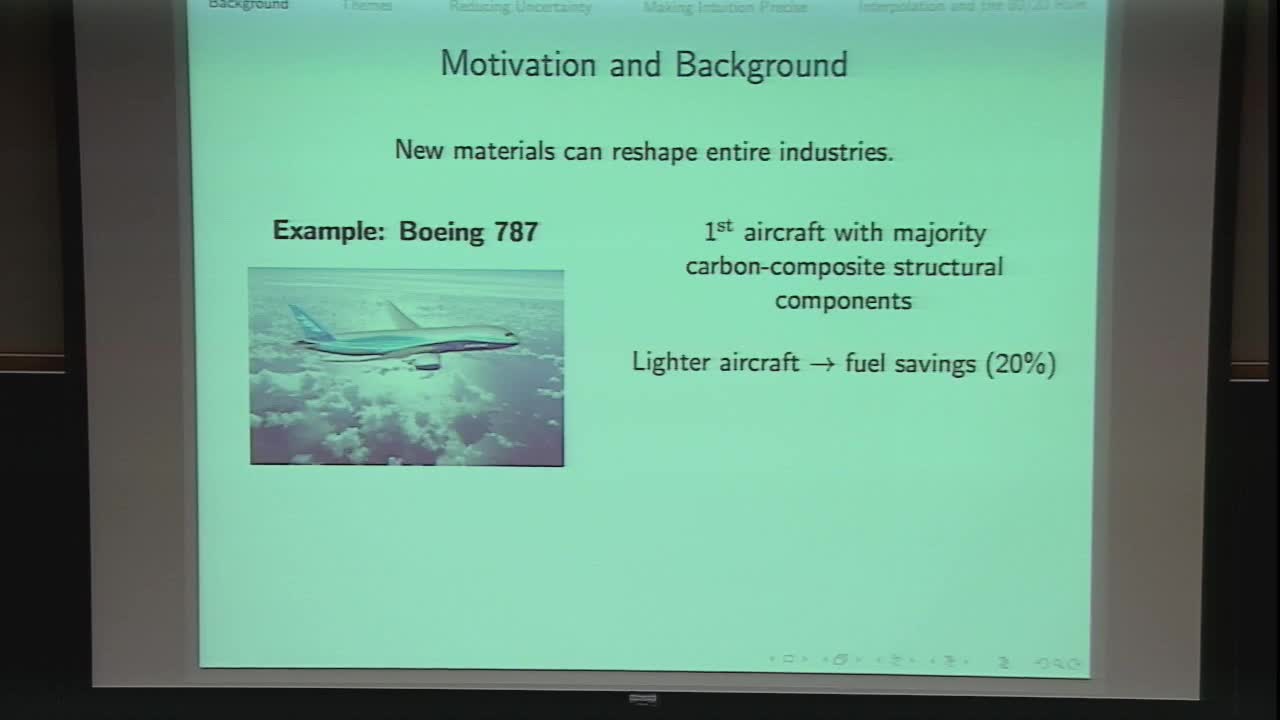Uncertainty Quantification in the Composites Industry: Designing Better Materials, Faster
Presenter
November 7, 2014
Keywords:
- Industry
MSC:
- 62P30
Abstract
In the aerospace composites industry, bringing new, high-performance materials to the market is critical to the maintaining an edge over competitors. However, materials development is a painfully slow process, and it can take upwards of 20 years before the discovery of a material and its first appearance in commercial grade applications. In recent years, there is an increasing desire to use atomistic-scale simulations to speed up the development process by rapidly exploring the properties of untested or novel materials. However, this task is complicated by the abundance of commercially available ingredients, and generally speaking, any interesting design space is too large to study by direct simulation
In this work, we combine uncertainty quantification tools with reduced order modeling as a method of rapidly exploring the properties of a class of amine-cured epoxies. The key idea is to identify a system and its mechanical properties on the basis of a few graph theoretic properties of its constituent molecular ingredients. Given a limited set of simulated and experimental data points within this low-dimensional framework, we use tools such as Gaussian process regression to approximate the relationship (and uncertainties) between the graph-theoretic and mechanical properties over the entire design space. This so-called response surface then enables the computationalist to (I) perform additional simulations where uncertainties are highest, and (II) identify those materials that are most likely to perform well in experiments.
